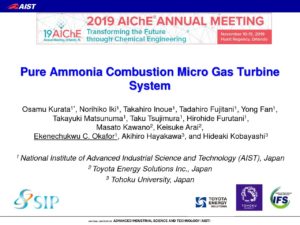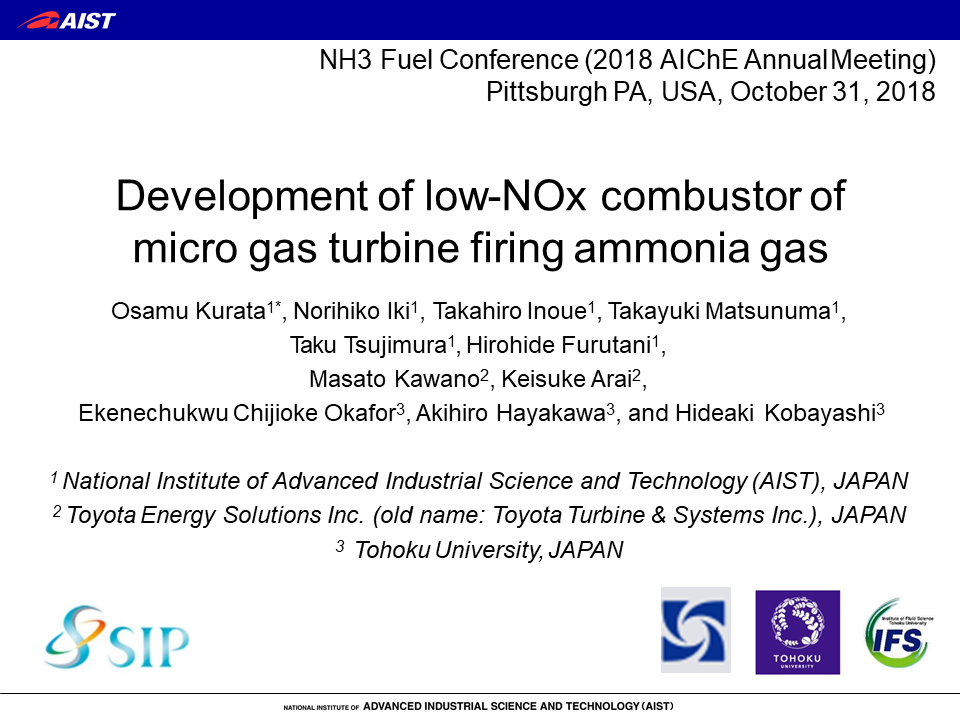Presentation
Pure Ammonia Combustion Micro Gas Turbine System
To protect against global warming, a massive influx of renewable energy is expected. Although hydrogen is a renewable media, its storage and transportation in large quantity has some problems. Ammonia fuel, however, is a hydrogen energy carrier and carbon-free fuel, and its storage and transportation technology is already established. In the 1960s, development of ammonia combustion gas turbines was abandoned because combustion efficiency was unacceptably low [1]. Recent demand for hydrogen energy carriers has revived the interest in ammonia as fuel [2, 3]. In 2015, ammonia-combustion gas turbine power generation was reported in Japan using a 50-kW class micro gas…






